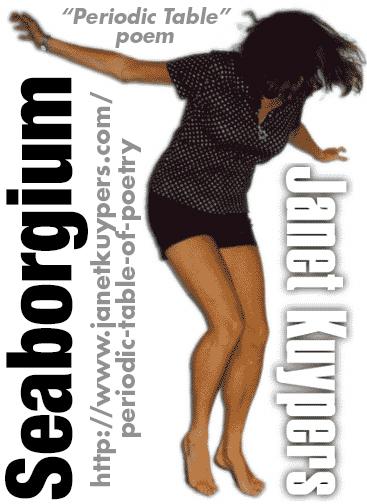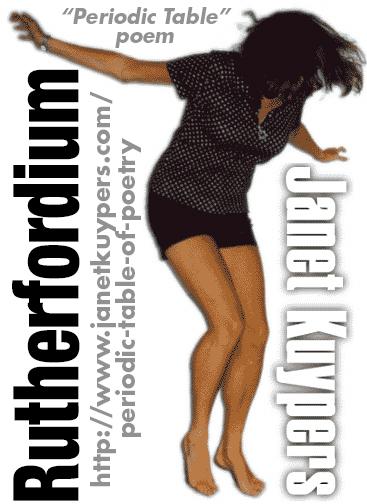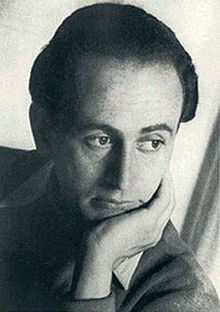Since 1939, the Unterberg Poetry Center has given discerning audiences a chance to hear the finest writers in every literary genre, and its unrivaled dedication to the writer’s voice in all of its aspects has made it America’s foremost literary forum.

[tubepress mode=”tag” tagValue=”92Y Poetry Readings Poem” resultsPerPage=”24″ resultCountCap=”96″ orderBy=”relevance” perPageSort=”relevance” ]
robin@artvilla.com
PoetryLifeTimes
Poetry Life & Times
editor@artvilla.com
www.artvilla.com
Artvilla.com
Poetry videos
Janet Kuypers read poetry from cc&d magazine ( v253 – the January/February 2015issue, titled “the Curve of Arctic Air”) at her Chicago poetry open mic “the Cafe Gallery” 2/18/15
Janet Kuypers reads Edee Lemoniers’ “Salvation” from cc&d magazine (v253, the Jan./Feb. 2015issue/book, titled “the Curve of Arctic Air”) at Chicago’s “the Cafe Gallery” 2/18/15
Janet Kuypers reads Jane Stuart’s “Jazzy Morning” from cc&d magazine (v253, the Jan./Feb. 2015issue/book, titled “the Curve of Arctic Air”) at Chicago’s “the Cafe Gallery” 2/18/15
Janet Kuypers reads Kenneth DiMaggio’s poem “Reflection #1 from A (perhaps) Heretical Lectio Divina Meditation” from cc&d magazine (v253, the Jan./Feb. 2015issue/book, titled “the Curve of Arctic Air”) at Chicago’s “the Cafe Gallery” 2/18/15
Janet Kuypers reads Marianne Szlyk’s “of Music and Metaphor in Somerville, MA” poem from cc&d magazine (v253, the Jan./Feb. 2015issue/book, titled “the Curve of Arctic Air”) at Chicago’s “the Cafe Gallery” 2/18/15
Janet Kuypers reads Ronald Charles Epstein’s “Miley Cyrus is Coming” poem from cc&d magazine (v253, the Jan./Feb. 2015issue/book, titled “the Curve of Arctic Air”) at Chicago’s “the Cafe Gallery” 2/18/15
Janet Kuypers reads Sheryl L Nelms’ “The Ultimate Uncool” poem from cc&d magazine (v253, the Jan./Feb. 2015issue/book, titled “the Curve of Arctic Air”) at Chicago’s “the Cafe Gallery” 2/18/15
Janet Kuypers reads poetry from assorted other poets that appears in the current issue of cc&d magazine (v253, the Jan./Feb. 2015issue/book, titled “the Curve of Arctic Air”) at Chicago’s “the Cafe Gallery” 2/18/15
Seaborgium, poem from the “Periodic Table of Poetry” series (#105, Sg) from the Chicago poet Janet Kuypers
Seaborgium
Janet Kuypers

from the “Periodic Table of Poetry” series (#105, Sg)
7/28/14 (started 7/27/14)
I’ve always loved the sea.
When standing at these Pacific shores
I’m always intoxicated by the action there,
at the vibrancy, the sense of life.
I’ve always been drawn to the idea of learning,
to California’s desire to explore and discover.
#
There was a scientist, Glenn Seaborg,
who later worked through U of C Berkeley.
And when it comes to discovery in California,
Seaborg really had a hold on the chemistry market.
Because during his career, he did theoretical work
in the development of the Actinide series
in the Periodic Table, and he even helped discover
ten elements (many in that Actinide series).
But one element that wasn’t in the Actinides series
that he helped discover, element one oh six,
that was the element people petitioned
to be named after him (you know, because
of all he had discovered for the Periodic Table).
But scientists in Dubna Russia were also wanting
to claim the naming rights for element one oh six,
and naming this element after Seaborg
caused quite a stir, because elements
are only named after dead people, they said.
But the Americans actually pulled it off
and got the new element named Seaborgium.
Transuranium elements like Seaborgium
are only artificially made with particle accelerators,
and I know those scientists,
after finding elements that way
only acquire one or two atoms,
and they can only guess the element’s properties
by their location on the Periodic Table…
I mean, Seaborgium’s isotopes
have half lives only seconds long,
and there’s no use we know of for Seaborgium
other than scientific research
(like for scientists like Seaborg or Albert Ghiorso,
or the leader of that Seaborgium discovery team).
But after the element was named Seaborgium,
and since Seaborgium is the only element
named after a living person,
it may have been possible
to send Glenn Seaborg a letter
addressed in chemical elements:
send it to Seaborgium,
in lawrencium (for his Lawrence Berkeley Lab),
in the city berkelium,
in the state californium,
and
(if the letter’s being mailed
from outside the U.S.)
in the country americium…
I don’t know if any letters like this
actually got through to him,
but for a man with that many
discoveries under his belt,
sending letters to him
using only Periodic Table elements
almost seems like icing on the cake.
Black Milk Todesfuge the Poetry of Paul Celan

Paul Celan (/ˈsɛlæn/; 23 November 1920 – c. 20 April 1970) was a German language poet and translator. He was born as Paul Antschel to a Jewish family in Cernăuți (German: Czernowitz), in the then Kingdom of Romania, (now Chernivtsy, Ukraine), and adopted the pseudonym “Paul Celan”. (Celan in Romanian is pronounced Chelàn, and was derived from the syllables of his surname). He became one of the major German-language poets of the post-World War II era.
Celan remained imprisoned in a work-camp until February 1944, when the Red Army’s advance forced the Romanians to abandon the camps, whereupon he returned to Cernăuţi shortly before the Soviets returned. There, he worked briefly as a nurse in the mental hospital. Friends from this period recall Celan expressing immense guilt over his separation from his parents, whom he had tried to convince to go into hiding prior to the deportations, shortly before their death.
A version of Celan’s poem Todesfuge appeared as “Tangoul Morţii” (“Death Tango”) in a Romanian translation of May 1947. Additional remarks were published explaining that the dancing and musical performances evoked in the poem were images of realities of the extermination camp life.
Celan became a French citizen in 1955 and lived in Paris. Celan’s sense of persecution increased after the widow of a friend, the French-German poet Yvan Goll, unjustly accused him of having plagiarised her husband’s work. Celan was awarded the Bremen Literature Prize in 1958 and the Georg Büchner Prize in 1960
Celan committed suicide by drowning in the Seine river in Paris, around April 20, 1970.
The death of his parents and the experience of the Shoah (The Holocaust) are defining forces in Celan’s poetry and his use of language. In his Bremen Prize speech, Celan said of language after Auschwitz that:
Only one thing remained reachable, close and secure amid all losses: language. Yes, language. In spite of everything, it remained secure against loss. But it had to go through its own lack of answers, through terrifying silence, through the thousand darknesses of murderous speech. It went through. It gave me no words for what was happening, but went through it. Went through and could resurface, ‘enriched’ by it all.
An Animated English Translation of Paul Celan’s famous work Todesfuge
Here it is read in the original German by its author Paul Celan
A further English translation where Todesfuge (Death Fuge) is entitled Black Milk
*Editors note: The actual Reading of Paul Celan’s works in original text German together with their English translations starts appx 28 minutes after a lengthy introduction
editor@artvilla.com
robin@artvilla.com
www.facebook.com/PoetryLifeTimes
www.facebook.com/Artvilla.com
Rutherfordium, poem from the “Periodic Table of Poetry” series (#104, Rf) from the Chicago poet Janet Kuypers
Rutherfordium
Janet Kuypers

from the “Periodic Table of Poetry” series (#104, Rf)
7/3/14
And when I get that engagement ring…
I don’t want Zirconium, I want a diamond!
I want something stronger!
Even the band,
everyone wants Gold,
but Platinum is stronger,
even Tungsten
(which has a cool goth sound to it)…
What’s the strongest element out there – Iridium?
Hey, that’s the stuff that was in the asteroid
that killed all the dinosaurs!
‘Cuz that stuff’s so strong that it’s brittle
and can’t even be bent into a wedding band…
But I want the biggest, strongest ring on my finger
because I want EVERYONE to know
that I’m gonna be the bride!
Because I’ve really had my heart set
on this one amazing man, Ernest.
(Isn’t that the coolest name, Ernest?
I mean, I’m being earnest with you,
that’s his name, and it sounds so cool!)
You see, he’s from the Rutherford family
and I’m so taken with him.
Oh, and get this, he was born in New Zealand
and now lives in the U.K. — this man
must know the world,
and I think I’m gonna melt!
But the things is, whenever he’s around
he’s only around for fleeting moments,
he mixes with friends
and his isotopes are around for as long as an hour,
but sometimes only for ten minutes,
and sometimes just for a minute or two…
So I ever get the chance to be with him
long enough to tell him how I feel.
My friends tell me not to bother,
because his radioactive personality
(that I’m so drawn to)
means that if I get too close
he might be trouble for me.
Well, I may not be the smartest girl
if he is such a strong and intelligent man,
but I’ve been doing all the research I can
about him. When it comes to researh,
I want to work with him,
and I want to learn.
I only hope he’ll let me.


